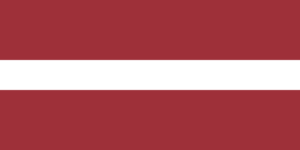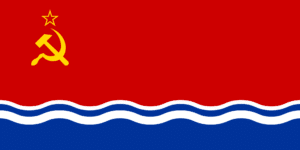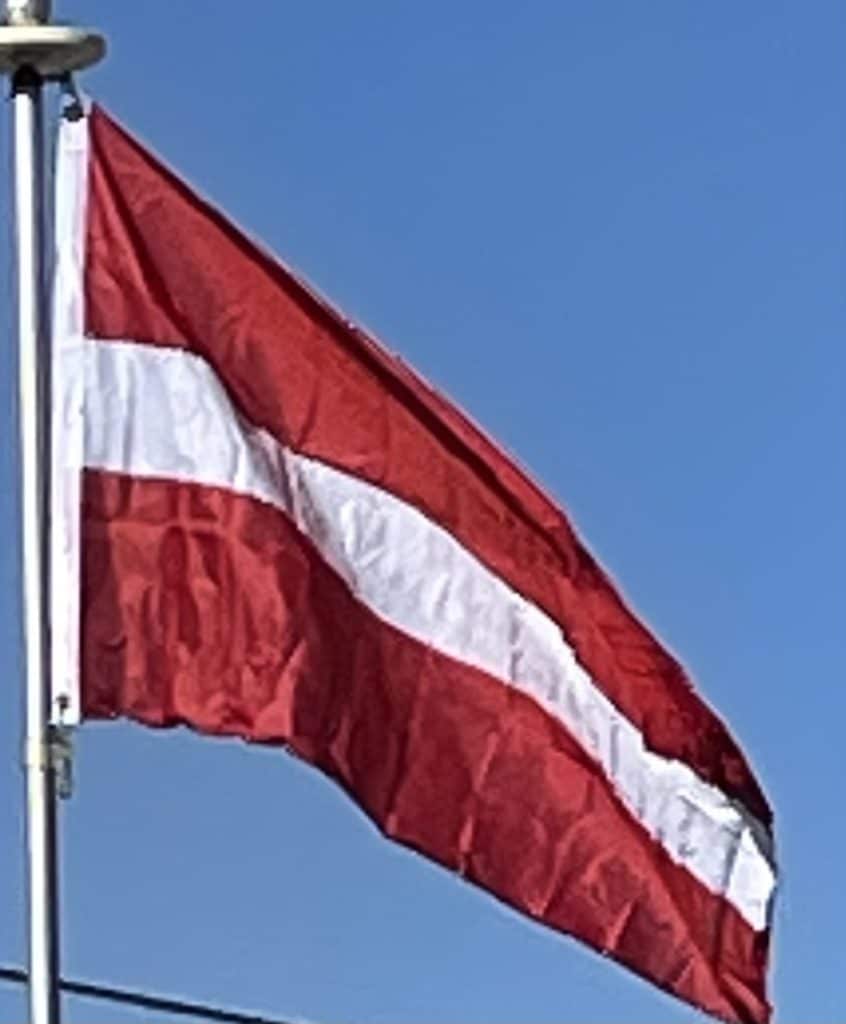
The red-white-red Latvian flag is first mentioned in the medieval Rhymed Chronicle of Livonia (Livländische Reimchronik), which covers the period from 1180 to 1343, and is thus among the oldest flags in the world. The chronicle tells of a battle that took place around 1279, in which ancient Latvian tribes from Cēsis, a city in the northern part of modern-day Latvia, went to war, bearing a red flag with a white stripe.
Legend recounts the story of the mortally wounded chief of a Latvian tribe who was wrapped in a white sheet. The part of the sheet on which he was lying remained white, but the two edges were stained in his blood. During the next battle the bloodstained sheet was used as a flag. According to the legend this time the Latvian warriors were successful and drove the enemy away. Ever since then Latvian tribes have used these colors.
Based on the aforementioned historical record, the present day flag design was adapted by artist Ansis Cīrulis in May 1917. The Latvian national flag, together with the national coat of arms was affirmed in this format by a special parliamentary decree of the Republic of Latvia passed on 15 June 1921.
During the period of occupation by the Soviet Union (and briefly by Nazi Germany), the red-white-red Latvian flag was rendered useless from 1940-1941 and 1944-1991. Any production and public display of the nationalist Latvian flag was considered anti-state crime and punishable by law.

Under the influence of Mikhail Gorbachev’s glasnost and perestroika initiatives, the flag of independent Latvia was restored on 15 February 1990, one and a half years before the formal recognition of Latvian independence.
Per Latvian law The Latvian national flag is carmine red with white horizontal stripe. (Latvian: tumši sarkana (karmin))[4] The colour on the flag is sometimes referred to as Latvian red. The red colour of the Latvian flag is a particularly dark shade, which is composed of brown and purple. The flag’s color proportions are 2:1:2 (the upper and lower red bands each being twice as wide as the central white band), and the ratio of the height of the flag to its width is fixed at 1:2.
